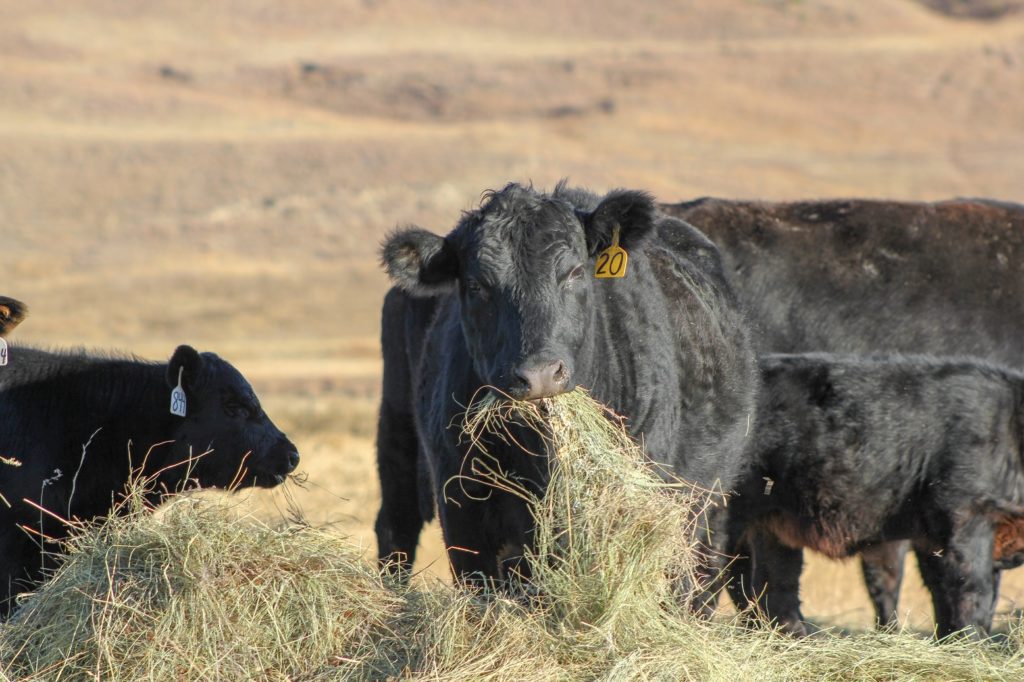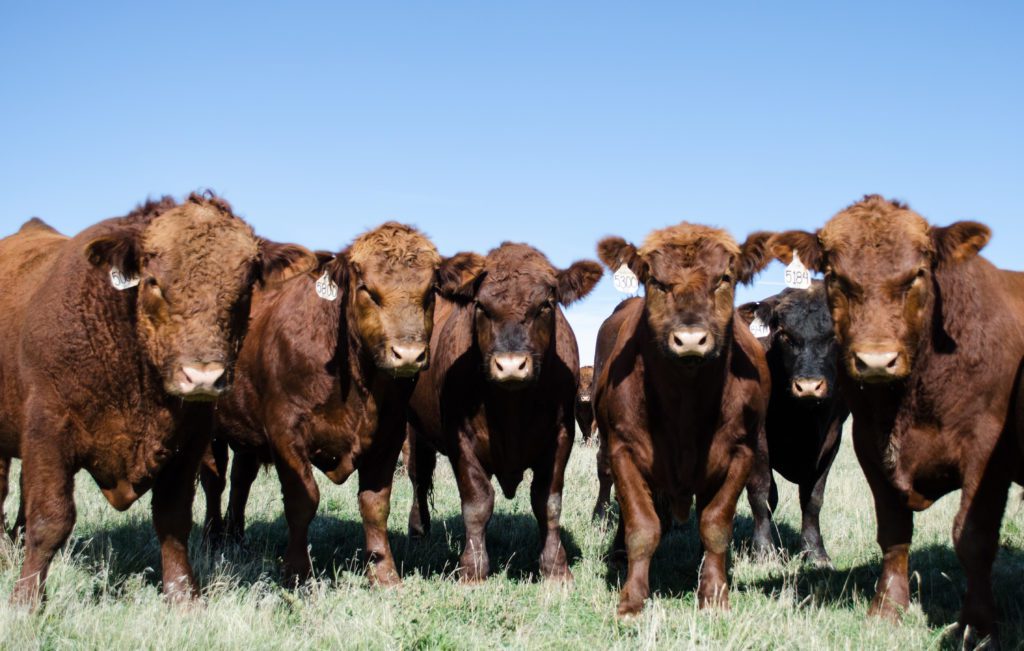When feeding harvested forages to the cow herd, you need to know what you have in order to know what to feed. This is vital when faced with some of the challenges we have seen in the past couple years such as flood, excessively cold and harsh winters, and drought. Over-feeding spends money unnecessarily and can deteriorate your bottom line. Underfeeding results in thin cows, which can lead to calving issues and disappointing conception rates.
What is the difference between hay that tests 9% crude protein (CP) on a dry matter (DM) basis versus hay that tests 7%? The easy answer is 2%, but what is the difference between these two hays when it comes to meeting cow requirements? A 1,300 lb, spring-calving cow in the second trimester (fall/early winter) requires 1.6 lb of CP as a portion of her dry matter intake. If all the factors were in your favor putting up hay this year and it tests at 9% CP, divide 1.6 lb of required CP by .09 (percent CP in your hay) requiring the cow to consume 17.8 lb DM of that hay to meet her protein demand. This calculation is illustrated here:


If hay did not test as well, here is the same calculation with the 7% CP hay:


That 5-lb difference on an individual animal level is not overwhelming, but when multiplied by the Nebraska average herd size of 94, that is a daily difference of 470 lb of DM (522 lb as-fed) for the herd. Extrapolate further to a producer with 300 cows. That producer would have to feed 1,500 lb DM (1,666 lb as-fed) more of the 7% CP hay each day. Just that 2% CP difference equals more than an entire bale each day. Or, examining it on a protein provided basis, you shorted that herd by 30 lb of protein, which is the equivalent of 19 cow’s daily protein requirements.
If the hay is the next step lower quality, say 5% CP (DM basis), the question becomes can that 1,300 lb cow physically consume enough hay to meet her requirements?


36 lb of as-fed intake is the equivalent of 2.77% of BW on a 1,300 lb cow just to meet the CP requirement. Given the likely digestibility associated with 5% CP hay, she cannot physically consume enough dry hay to meet her daily nutrient requirements. Therefore, a supplementation strategy should be established before using that lower quality hay.
Based on USDA reports, Nebraska grass hay price for Fair Quality (5-9% CP) large rounds is $82/ton. The 2% CP difference for the 300-cow herd amounts to a $68.31 difference each day, or $2,050 a month. It only takes an $18 forage sample to tell you what you have, so you know what to feed. Truly, the answer to whether you know the difference between 7% CP hay and 9% CP hay is, “yes, I got my forages tested”.


Source: Hannah Greenwell, Nebraska Extension Educator, University of Nebraska-Lincoln, Institute of Agriculture and Natural Resources, UNL BEEF
Photo: Troy Walz.









